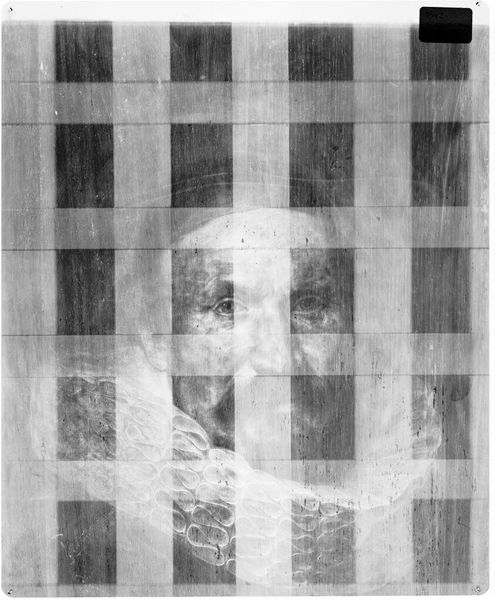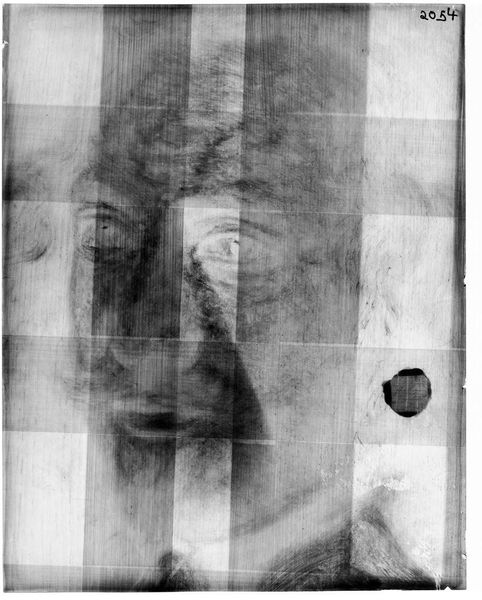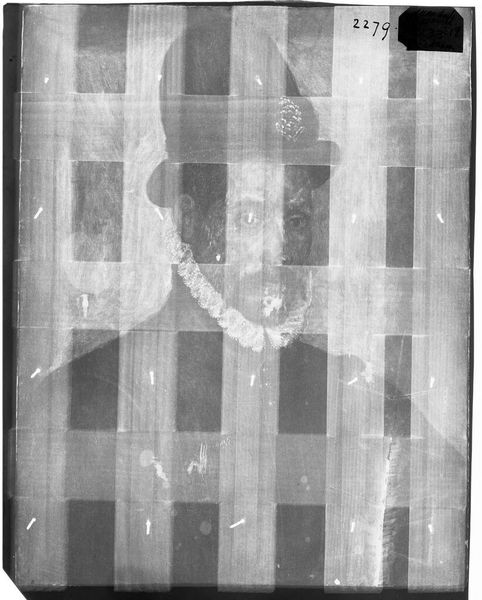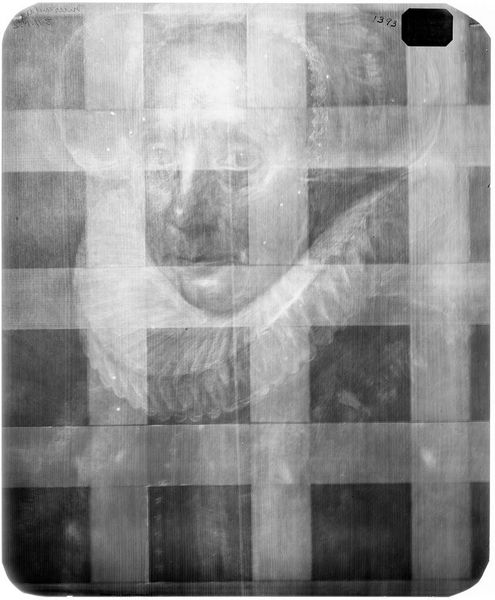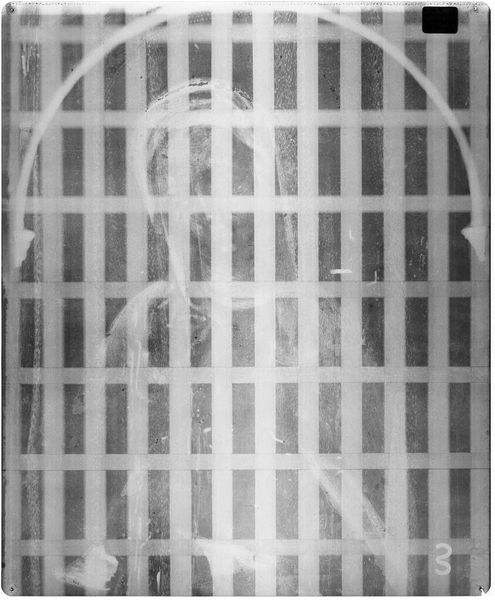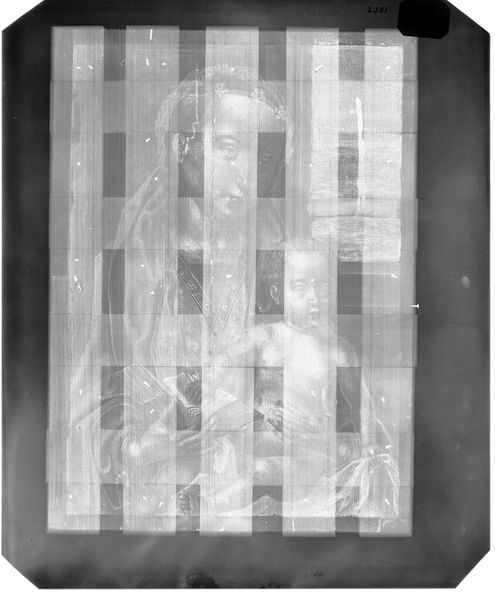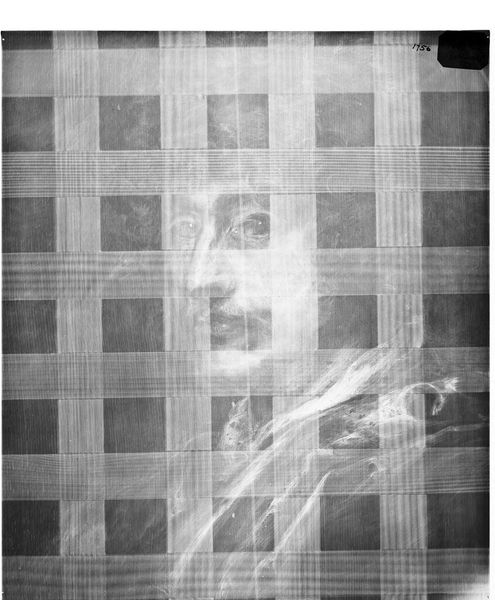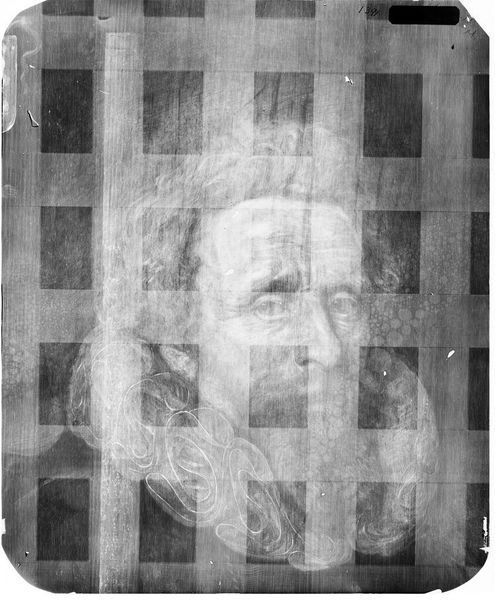
X-radiograph(s) of "Self-Portrait" Possibly 1 - 71
Copyright: CC0 1.0
Curator: This is an X-radiograph of Philippe de Champaigne’s "Self-Portrait," housed here at the Harvard Art Museums. The X-ray reveals the hidden layers beneath the visible surface. Editor: It’s a rather unsettling image, isn’t it? That grid, those obscured features. Almost like looking at a prisoner. Curator: Indeed. The grid is the wooden support, exposed by the radiography. But it raises questions about artistic intention and historical context. What does it mean to unveil the physical structure of a self-portrait? Editor: The way the planes of the face are flattened, and the subtle gradations of light and shadow...it’s a study of form, now stripped bare. Like an anatomical drawing. Curator: Perhaps it's a comment on the power dynamics inherent in portraiture itself. The artist, laid bare, both literally and figuratively. Editor: I see it as a meditation on visibility and concealment, a dialogue between what is seen and unseen in the act of representation. Curator: I find myself pondering the institutional implications; the role of museums in exposing and interpreting these hidden narratives. Editor: And I am left appreciating the visual tension created by the superimposition of grid and portrait.
Comments
No comments
Be the first to comment and join the conversation on the ultimate creative platform.

